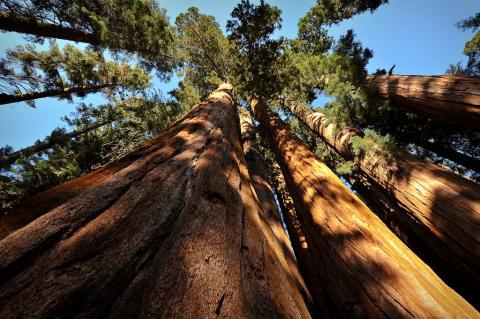
It's been a brutal forest fire season in California. But there's actually a greater threat to California's trees — the state's record-setting drought. The lack of water has killed at least 60 million trees in the past four years.
Scientists are struggling to understand which trees are most vulnerable to drought and how to keep the survivors alive. To that end, they're sending human climbers and flying drones into the treetops, in a novel biological experiment.
From a distance, the forests of the Sierra Nevada look blotchy, with patches of dead trees standing right next to healthy green ones.
Nate Stephenson, an ecologist with the U.S. Geological Survey, says the drought and high heat combine to do things he hasn't seen before. "We don't really understand a lot of things," he says, "like exactly how a drought kills a tree, or what's going on underground. Where is the water flowing in areas we can't see?"
Stephenson and his team of ecologists pull into a designated spot in the mountains, near Sequoia National Park, with truckloads of equipment they'll have to carry in. Their mission: to find out what separates the surviving trees from the dead. Their ultimate destination is down a steep slope — through a blanket of pine needles, rotting tree limbs and a few yellow-jacket nests they are careful not to walk on.
The walk is worth it. Looming above is Odin, a green and thriving giant sequoia that's more than 1,600 years old. The top is 250 feet up. Its base is as wide as a city street. Odin was a sapling when Rome was still an empire and, for some reason, it and many other sequoias are resisting this drought.

